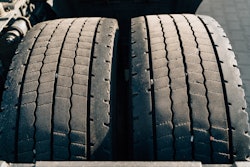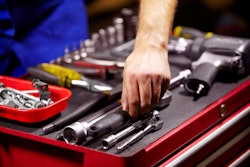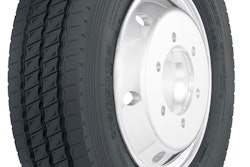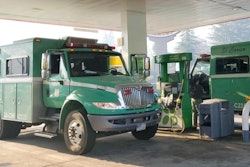Safety means different things in different industries, but in trucking safety is keeping trucks running at optimal levels while drivers adhere to health and well-being standards.
The summer months bring a flock of tourist drivers to highways, increasing the chance of traffic accidents among fleets and nearby vehicles. We recommend inspecting vehicles and replacing certain parts before long-haul trips this season to avoid unexpected downtime.
Replace headlights
The days are getting longer and the nights are getting shorter, but there is still very good reason to inspect lighting equipment in heavy-duty vehicles. For one, deer birthing season runs from May through June, and truckers will see a lot more roaming wildlife. June also kicks-off hurricane season, meaning that dark rain clouds will occupy a once bright sky. These factors contribute to why fleets should consider replacing headlights. But which type is best to install?LED and Halogen lights remain the top lighting sources for truckers, and the jury is still out as to which type of lighting is better than the other. The vibrant blue-white optics found on LED lights allow for a wider scope of landscape, making this a desirable choice to see road signs and running wild animals. Drivers can continue using LED headlights on trucks even when some diodes burn out (until laws are changed), as a perk. They also draw far less power compared to halogen to produce the same brightness.
While they are long-lasting and helpful for drivers, nearby vehicles can find LEDs distracting due to the light’s intensity. On the flip-side, halogen lights remind truckers of traditional incandescent lights because of the similar yellowish-white glow. These lights offer a bright path forward but are limited in side views, making it difficult for drivers to see what's around the periphery. But they're cheap, can last up to 1,000 hours and are easy to replace.
Install ADAS technologies
From the flashing text message to the billboard with the pretty lady, distractions are everywhere. According to the Federal Motor Carrier Safety Administration, 70% of truck accidents are caused by distracted driving. In 2019, 36,096 people died in motor vehicle crashes tied to human error. To reduce the number of crashes, trucking brands like WABCO have designed Advanced Drive Assistance Systems (ADAS) technologies to help drivers remain alert and avoid collisions. There are four types of ADAS technologies that are commonly installed in big rigs: Adaptive, Automated, Monitoring and Warning.
Adaptive ADAS helps the vehicle make small adjustments based on its surroundings. Adaptive Cruise Control (ACC) is one example that acknowledges surrounding driver speeds and adjusts the truck’s speed accordingly to maintain a safe distance.
Automated ADAS can actually take control when help is needed most, like in emergency situations. Automated ADAS is available in most modern trucks and cars and offers automatic braking alerts and capabilities.
Monitoring ADAS is basically camera and/or sensor-based surveillance that recognizes safety concerns while driving.
Warning ADAS offers real time alerts that measure speed, distance, angle and other safety variables. In the event of impending danger – lane departure, for example – the warning platform sends an audible alert to the driver, allowing them to make necessary corrections.
Check mirrors
Vehicles within 30 feet of a commercial truck cannot easily be seen by drivers. According to the National Highway Traffic Safety Administration, nearly 840,000 blind spot accidents occur each year, resulting in 300 deaths.It’s easy to underestimate the importance of mirrors until they need replacement. There are many types of mirrors on the market: heated, non-heated folding and towing mirrors just to name a few. Some even have built-in lights to offer more visibility. Before purchasing a mirror, assess if there is minor or major damage to the current units, whether it needs to be repainted after delivery and if additional features, such as built-in lights, are of interest.
Consider cameras
Backing a semi at a loading dock can be nerve-wrecking, and this is when back-up cameras are helpful. Cameras can also assist with blind spot coverage. According to JIT Truck Parts, black-and-white or colored camera systems come in several sizes; are waterproof; run on 12DVC of power; and may include integrated heating features for cold weather operation. The technologies can offer blind spot coverage in addition to remote video diagnostics. Side and rear cameras can also be mounted to trailers to help monitor clearance underneath awnings and watch the progress of cargo being moved to and from the truck. When driving at high speeds, drivers can use these types of cameras to watch the movements of other vehicles, too.Carry warning triangles
Triangle kits are helpful safety accessories to have in emergency situations, and they are legally required. When on the side of the road, placing reflective warning triangles around the truck’s location will alert passing vehicles of a problem, and they are required by the Federal Motor Carrier Safety Act to be deployed in three locations within 10 minutes of stopping. The emergency triangles’ locations are based on the type of roadway and where the truck is stopped.June may be National Safety Month but safety is a year-round concern. In trucking, being safe means pre-trip planning by keeping up with vehicle maintenance to better safeguard fleets and nearby vehicles.
For any part repairs or replacements, be sure to refer to the specific part’s installation instructions and the truck operator’s manual for more information and safety requirements.
Jennifer Smith is an e-Commerce Digital Content Specialist at JIT Truck Parts in Highland Park, Illinois.













